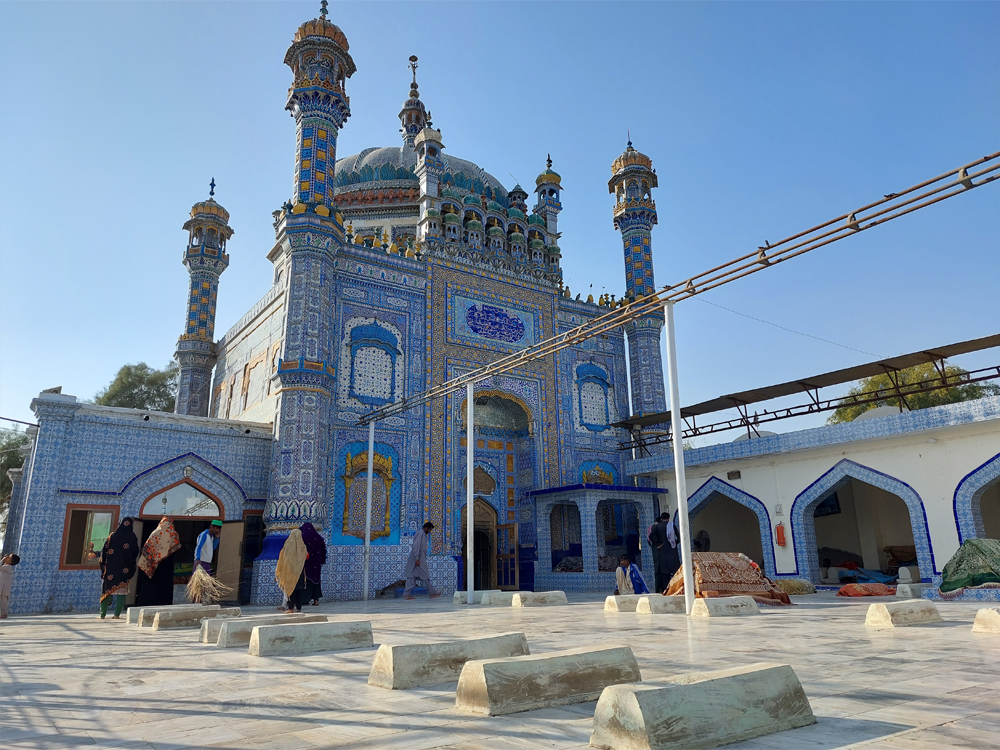ART AND ARCHITCCTURE OF HAZRAT SACHAL SARMAST DARGAH
Sindh is a land of Sufism, that even in the modern times Sufi dargahs are being used as a socio- religious institute of brotherhood by visiting shrines and performing various rituals. Despite many other Sufis of Sindh included Lal Shahbaz Qalandar, Abdullah Shah Ghazi Qalander Baba Auliya, and Pir Mangho; Shah Abdul Latif Bhittai and Shachal were the most celebrated Sufis due to their lyrical poetry and philosophy. Hazrat Sachal Sarmast was entitled as “the poet of seven languages”. He lived during the kolhoro/ Talpur Era and at the age of 90 years he passed away in 1829. In later years, one of the rulers of Khairpur, Mir Rustam KhanTalpur built the mausoleum of Hazrat Sachal Sarmast.

The tomb was planned as a dome with a square base, slightly tapered walls with piers located at four corners. These types of mausoleum were built with indigenous and available material in the Ghaznavid and Gaurid period after the arrival of Islam in Sindh. However in later period, the Hindu, Mughal and Sikh art influences the architecture and art decorations of the buildings. Likewise, the shrine of Sachal Sarmast have octagonal based minarets which were inspired by the royal structures and mosques constructed by the Mughals. The cuboid is covered with a drum dome having flutes which were accompanied by the small kapulas like Sikh domes. Other than that, the most important part of this Sufi complex is the courtyard located outside the tomb which is as important as interior space of the shrine. The open area is used for social gatherings, musical events with recitation of Sufi Kalam, dhamal and langar. A couple of graves can also be seen in the courtyard plastered in white finish.

This monument become one of the thought-provoking examples of fresh cross cultured artistic influence exhibiting Islamic, Hindu and Sikh features. The shrine seems like an intricate experimentation has been performed which was patron by the dynastic rulers by composing various artistic elements into one small scale project. The stylistic approach towards Islamic Funerary architecture inspired by the Persian art infused with artistic traditions, aesthetical values and the skills of available artistic craftsmanship. Like many other religions, colors play a vital role in Sufi traditions. The significance of colors has been highlighted many times in the Prophetic traditions as well. The use of White, Blue, Green, Yellow and Gold has been observed in the art decoration of Islamic tombs. Before the construction of Sachal Sarmast’s Shrine the same range of colors was used by Sikhs having different ideologies and meanings.
Overall, the complex is visited by numerous people each day to perform their rituals.





